VESTIGIAL: Something that has lost its original function but still retained.
While normally a biological term - think of your appendix - it can apply to an often overlooked but fascinating part of modern best guns. As with all vestigial's, fences once had an actual purpose and, as that need or purpose became obsolete, those lovely little artistic sculptures devolved into respectful hints of their antecedents.
Sometimes to understand where we are it is useful to look at where we've been and the story of these often elegant examples of file and chisel work is part of the story of the path leading to today's best gun.
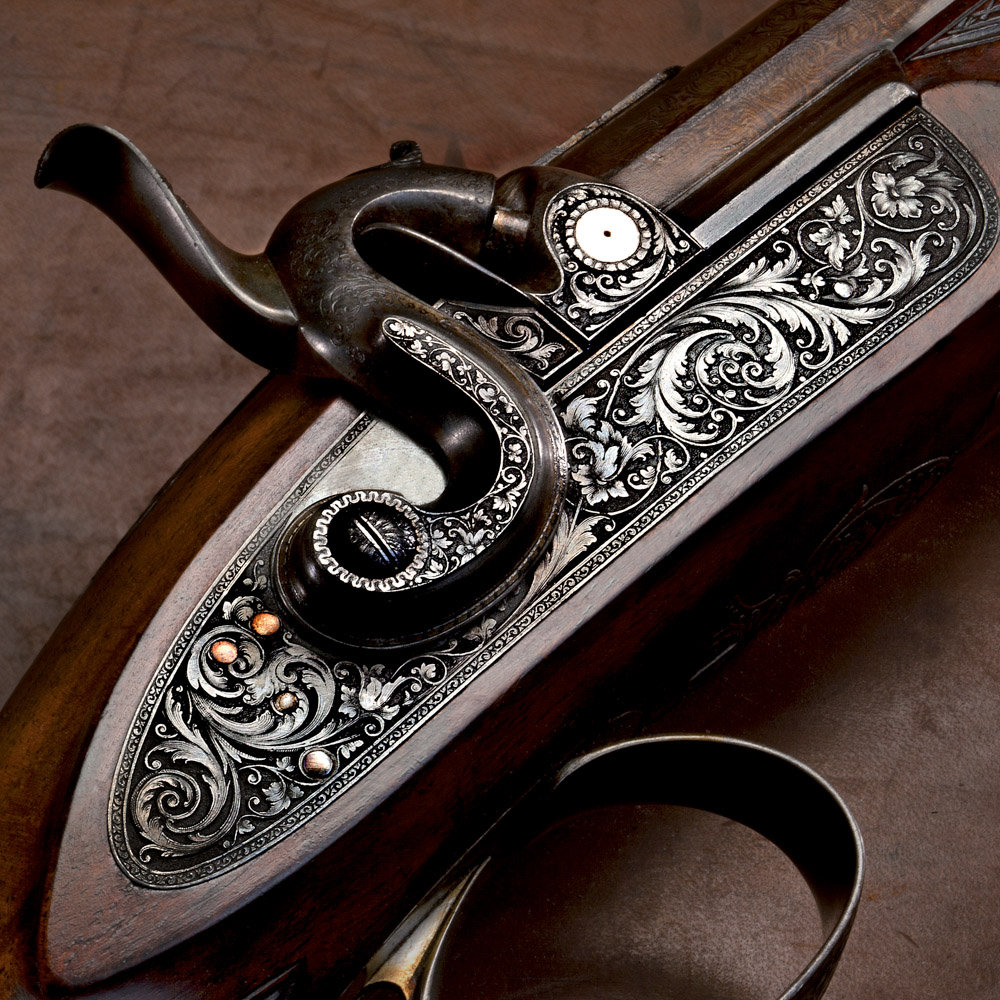 The 'Fence' can be seen between the nipple and the hammer body.
The 'Fence' can be seen between the nipple and the hammer body.
 Two percussion guns showing the original Fences which provided a spark barrier.
Two percussion guns showing the original Fences which provided a spark barrier.
In the days of external ignition, fences did indeed serve a real purpose. The prospect of burning black powder, sparking iron and hot gas being blown back into the shooter's face was cause enough to develop some sort of protective shield. The solution was to leave a protective barrier between the flash and the flesh and, over time, these barriers or "fences" became beautiful examples of the actioner's skills. In some instances the carving of the more ornate fence work was the job of the stocker. Something not often considered is the fact that on double guns two fences are required. Two identical but mirror image fences. With a single fence a bit of 'artistic license' might be gotten away with, if things got a touch off pattern. No such option when the two are side by side just inviting comparison.
Among the various styles, ball and bead was and is the norm on modern guns for such firms as Westley Richards, Boss, Purdey, Holland and Holland and many others. However, makers such as Woodward, Grant, Greener and Rigby to name only a few, developed signature looks, often with great elegance. Woodward and Greener with their distinctive arcaded or umbrella fences along with Greener's clam shell effect and Rigby and Grant with their sculpted leaf fences all vied with one another. Fleur de Lys and grape and vine leaf were among special styles. The American Parker gun had an arrangement of ball and bead with the number of beads increasing as the grades ascended from "B" to "A One Special".
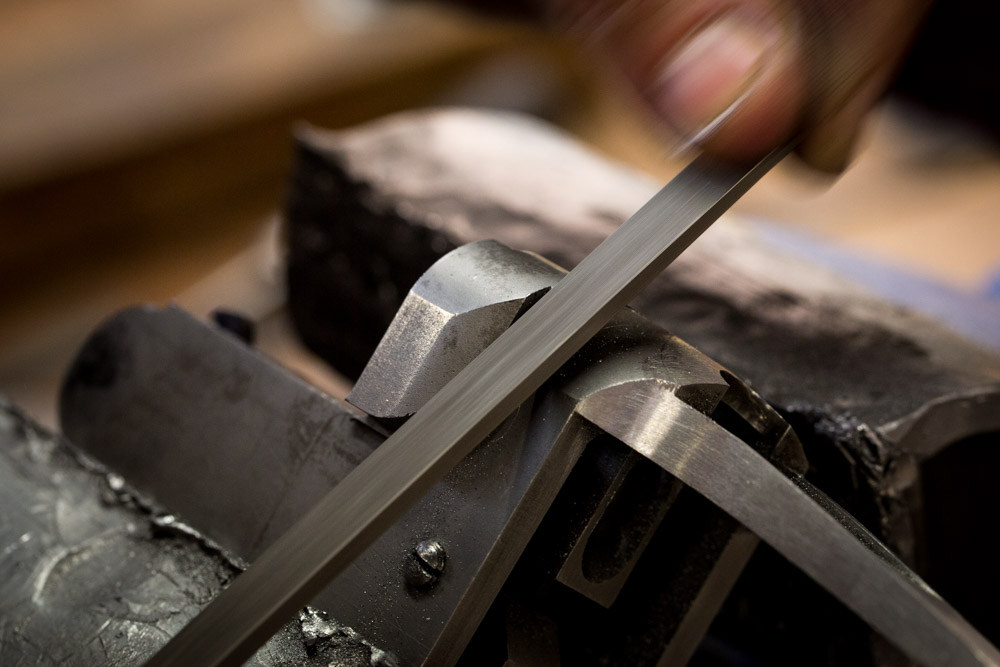 The first strokes of the file at the start of the filing up process.
The first strokes of the file at the start of the filing up process.
Today's CNC machines can and do generate fences but the very best work is still done by men with files and chisels and, by definition, best work is what a best gun is about. When asked about the difference between making guns and making best guns, Tom Wilkes made the observation 'it all comes down to time and control of the tool, doesn't it'?
To sum up, while of no particular use today, these interesting examples of gunmaker's skills are part and parcel of what a best gun stands on to the present day.
The next time you hold a really fine British gun you might take a moment or two to carefully look at these little exercises in iron, consider why they're there, where they came from and what it took to produce them.
My Thanks to David Brown for this guest post and I hope I have illustrated it correctly!












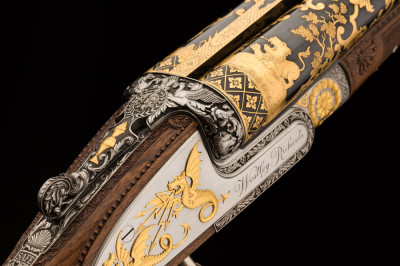
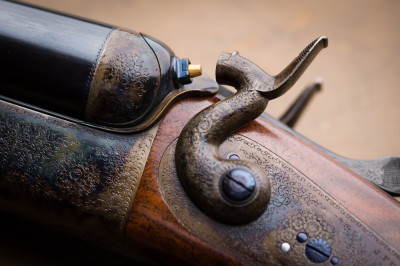
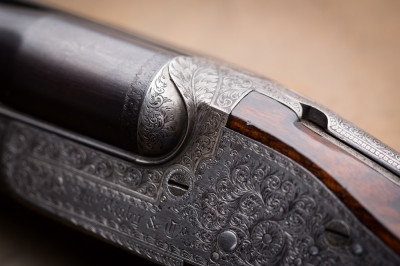
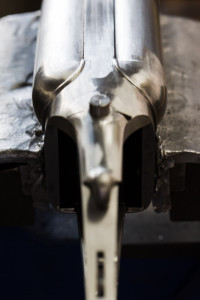






Gary Duffey on November 20, 2014 at 3:36 pm
I think that the fences are the first thing that my brain sees when I see a double and and then I can absorb the profile in total. For me it does start right there though. Great post and photos.
Jim Westberg on November 22, 2014 at 10:06 am
Interesting observations. Filing and polishing to achieve an exact match requires exceptional skill.
Stephen Grist on November 22, 2014 at 10:13 am
As machine tools become ever more capable in terms of the intricacies and precision of the shapes they can form, I wonder how long it will be before we forget entirely that these ornamental features, which this article celebrates so well, were formed entirely with hand tools for more than two centuries. I recall John Wilkes commenting on how difficult it was to get the shapes just right where the lines of the barrels and of the rib flow into the fence - making it look like they are all part of one elegantly shaped object, rather than two joined together.
Mike on November 26, 2020 at 4:46 pm
You gents on the east side of the “big pond” have been referring to fences since percussion days. When did our term “breech balls” become popular? Is it just a USA phrase or do you sometimes refer to fences as breech balls?
LD McCaa on December 6, 2020 at 9:18 am
We use it one in the same Mike. I prefer “fences” myself.